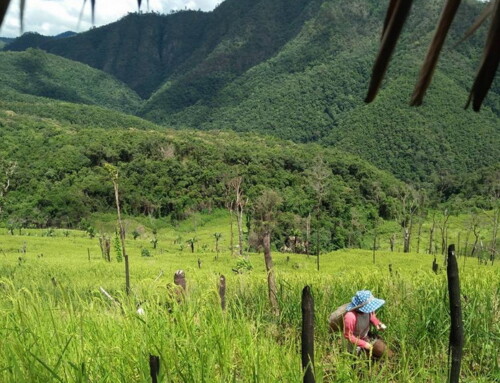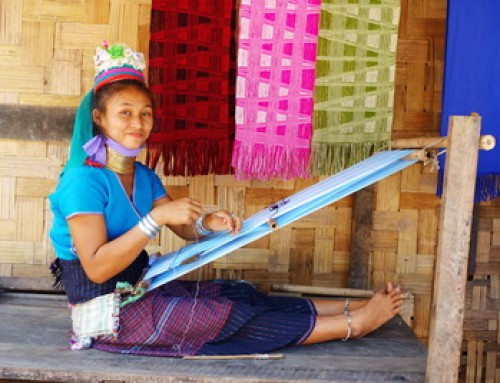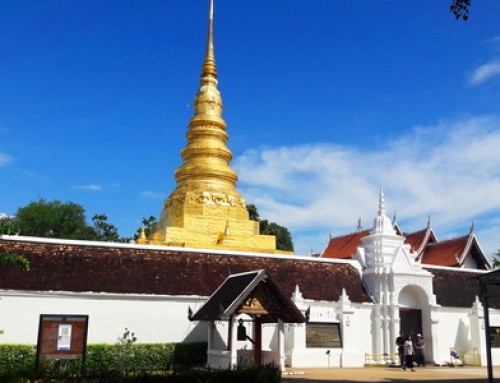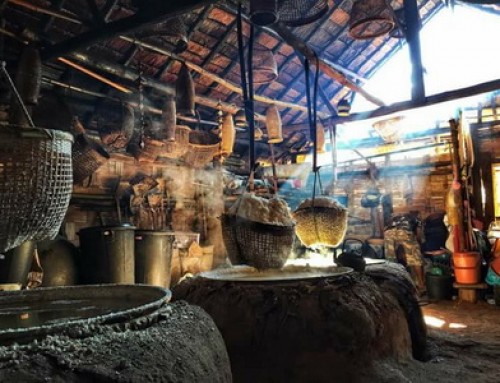Chiang Mai Thailand Tourist Information
Chiang Mai, the City of Life & Prosperity of its own unique culture and nature with 715 years old city (Ancient Kingdom of Lanna)


Chiang Mai is the largest and most culturally significant city in northern Thailand, and is the capital of Chiang Mai Province. It is located 700 km (435 mi) north of Bangkok, among the highest mountains in the country. The city is on the Ping river, a major tributary of the Chao Phraya river.
In recent years, Chiang Mai has become an increasingly modern city and attracts approximately 1 million visitors each year. Chiang Mai gained prominence in the political sphere in May 2006, when the Chiang Mai Initiative was concluded here between the ASEAN nations and the “+3” countries (China, Japan, and South Korea). Chiang Mai’s historic importance derived from its strategic location on the Ping river and major trade routes. The city has long been a major center for handcrafted goods, umbrellas, jewelry (particularly silver) and woodcarving.
While officially the city of Chiang Mai only covers most parts of the Mueang Chiang Mai district with a population of 150,000, the urban sprawl of the city now extends into several neighboring districts. This Chiang Mai Metropolitan Area has a population of nearly one million people, more than half the total of Chiang Mai Province.


History
King Mengrai founded the city of Chiang Mai (meaning “new city”) in 1296, and it succeeded Chiang Rai as capital of the Lanna kingdom. The ruler was known as the Chao. The city was surrounded by a moat and a defensive wall, since nearby Burma was a constant threat. With the decline of the Lannathai kingdom, the city lost importance and was often occupied either by the Burmese or Thais from Ayutthaya. Because of the Burmese wars that culminated in the fall of Ayutthaya in April 1767, Chiang Mai was abandoned between 1776 and 1791. Lampang then served as the capital of what remained of Lannathai. Chiang Mai formally became part of Siam in 1774 by an agreement with Chao Kavila, after the Thai King Taksin helped drive out the Burmese. Chiang Mai then slowly grew in cultural, trading and economic importance to its current status as the unofficial capital of northern Thailand, second in importance only to Bangkok.
The inhabitants speak Kham Muang (also known as Northern Thai or Lanna) among themselves, though Central Thai is used in education and is understood by everyone. English is used in hotels and travel-related businesses and many educated people speak English. The Kham Muang alphabet is now studied only by scholars, and Northern Thai is commonly written with the standard Thai alphabet.
The modern municipal dates to a sanitary district (sukhaphiban) that was created in 1915. This was upgraded to a municipality (thesaban) on March 29 1935, as published in the Royal Gazette, Book No. 52 section 80. First covering just 17.5 km2 (7 sq mi), the city was enlarged to 40.216 km2 (16 sq mi) on April 5, 1983.


Chiang Mai Weather
Being a mountainous region, Chiang Mai weather varies considerably in comparison to other parts of Thailand. However, the moderate and cool weather is a big allure for locals and tourists alike.
Chiang Mai does not experience too many variations between day and night time temperatures. Due to its higher elevation, the city’s weather can be quite unpredictable at times.
The weather of Chiang Mai can be clearly divided into three seasons – hot, rainy and cool. Summers begin at the early March and go on till the end of May. During this period, temperatures range between 17’C and 36’C. During the daytime, the average temperature is around the 30′ Celsius mark. April is the hottest month in the region.
By the end of March, the surrounding valley becomes hazy and the rainy season sets in. Sometimes, short and violent stormsbringin winds and rains that provide a relief from the dryness. The rainy season lasts between June and October. In this season, theaverage daytime temperature is about 25’C, with September being the wettest month. The afternoons experience short and intense rainstorms that get cleared by the evening.
The period from November to February is the cool season in Chiang Mai. Temperatures are slightly low at nighttime. At higher altitudes, temperatures even drop to near freezing levels. The information on weather in Chiang Mai will guide you about the kind of clothing and precautions to be taken during your trip there.


Chiang Mai People and Culture
The people and culture in Chiang Mai provide a deep insight into the heritage and tradition of the place.
Chiang Mai Province consists of a population of 1,670,317 (This number from Department of Provincial Administration, Dec 2008) live in the city. The people of Chiang Mai are of mixed origin. The Mon was first the first group of traders that joined the inhabitants of Chiang Mai, and founded a new region. By the 13th century, Tai became the dominant ethnic group in the region.
Burmese came to Chiang Mai in the 16th century and brought in their culture and traditions. In the later half of 19th century, a number of Chinese and Muslims also migrated to the place. Thus, people of Chiang Mai are a mixture of various world cultures.
The ethnic language spoken here is kham muang. Theravada Buddhism is the main religion followed by the people of Chiang Mai. Islam and Christianity are also followed by some ethnic communities in the city.
The culture of Chiang Mai is deep-rooted in traditionalism, yet in sync with modernity. The city is home to numerous art centersthat promote the artworks of local artistes. Silverwork, bamboo work, woodcarving, etc are some of the local forms of handicraftsthat are extremely popular.
Various Thai festivals and events are celebrated with great zeal and enthusiasm as per the culture of Chiang Mai. The architecture of the buildings in the city is a fine blend of western and oriental influences, styles and methods.


The dances in Chiang Mai’s culture are expressions of birth, death and daily life of its people. Local music is deep and soothing and touches the hearts of listeners.The culture of the city is sure to leave an inerasable impression in the ATTRACTION BY OTHER DISTRICTS
- Mueang Chiang Mai
Old City of Chiang Mai > Wat Phra Singh, Wat Chiang Man, Wat Chedi Luang, The Art and Cultural Centre Chiang Mai, Three Kings Monument, Wat Phan Tao
City Area > Chiang Mai Zoo, Wiang Kum Kam, Wat Chet Yot, Wat Umong, Wat Suan Dok, Wat Rampoeng, Art in Paradise, Wat Sri Supan, Chiang Mai National Museum, Wat Ket Karam, Wat Lok Moli, Wat Chaimongkol
Markets > Night Bazaar, Sunday Markets (Walking Street Only Sunday), Saturday (Wua Lai) Market, Warorot Market or Kad Luang, Khamtieng Plant Market (Flower market), Nimman Walking Street
Doi Suthep – Doi Pui National Park > Wat Phra That Doi Suthep, Bhubing Palace, Doi Pui Hmong Village, Khun Chang Kian Hmong Village, Wat Pha Lad
- Mae Rim District
Huay Tung Tao, Tiger Kingdom, Orchid and Butterfly Farms, Mae Sa Snake Farm, Mae Rim Crocodile Show, Monkey School, Siam Insect Zoo, Mae Sa Waterfall, Mae Sa Elephant Camp, Botanic Garden, Mon Jam, Elephant Poopoo Paper Park, Eco-Agricultural Hill Tribes Village,
- Samoeng District
Strawberry Farm in Samoeng, Samoeng Loop
- San Kamphaeng District
Sankampaeng and Borsang Handicaft Village, Muang On Cave, San Kamphang Hot Spring
- Mae On District
- Doi Saket District
- Hang Dong District
Royal Flora Ratchaphruek, Chiang Mai Night Safari, Wat Phrathat Doi Kham, Chiang Mai Grand Canyon,
- Doi Lo District
Mae Wang National Park > Pha Chor, Rafting in Mae Wang River, Wat Luang Khun WIn
- Mae Taeng District
Mae Tang Elephant Camp, Kang Kued Whitewater Rafting
Huai Nam Dang National Park > Doi Chang, Doi Gew Lom
Si Lanna National Park > Bua Tong Waterfall, Mae Ngat Irrigation Reservoir
- Chom Thong District
Doi Inthanon National Park > Ang Ka Natural Trial, Kew Mae Pan Nature Trail, Phra Mahathat Chedi Nophamethanidol and Phra Mahathat Noppholbhumisiri(King and Queen Pagoda), Hmong Market, Mae Ya Waterfall, Mae Klang Water Fall, Wachirathan Water fall, Khun Wang Royal Project,
- Mae Jam District
Mae Jam > Step rice field, Sinh Teenjok Fabric, Pin Thong Luang Hairpins, Wat Pha Daed, Wat Yang Luang, Wat Phuttha Eoen, Mae Aok Hue Waterfall
- Chiang Dao District
- Fang District
Royal Agricultural Station Angkhang, Doi Ang Khang
Doi Pha Hom Pok National Park > Doi Pha Hom Pok, Fang Hot Springs
- Mae Ai District
- Doi Tao District












Leave A Comment